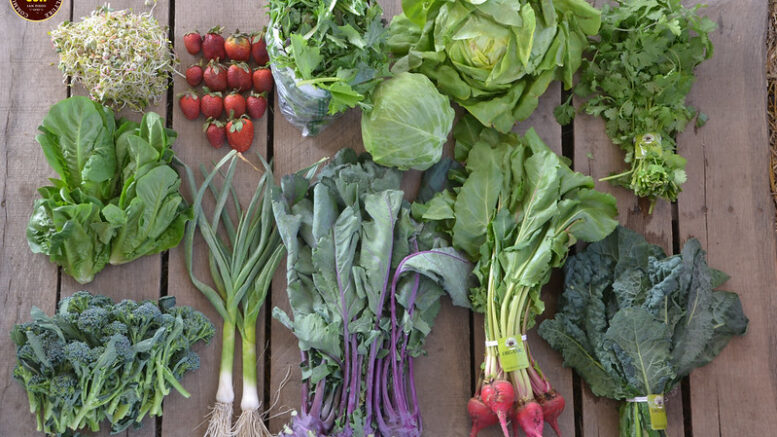Photo Credit – Organic Garden – Suzie’s Farm – Flickr
Growing organic vegetables is a rewarding and sustainable way to enjoy fresh produce while contributing to a healthier environment. This guide provides insights into the fastest growing vegetables, the easiest vegetables to cultivate, the pros and cons of different growing methods, common problems and pests, as well as tips and recommendations for success.
Fastest Growing Vegetables
If you’re looking to reap the rewards of your gardening efforts quickly, consider planting the following fast-growing vegetables:
1. Radishes
Radishes are among the quickest crops, maturing in as little as 3 to 4 weeks. With a variety of colors and flavors, they can be enjoyed fresh in salads or pickled.
2. Lettuce
Lettuce varieties such as leaf and butterhead can be harvested in 30 to 45 days. They thrive in cooler weather, making them perfect for spring or fall planting.
3. Spinach
This nutrient-dense leafy green grows rapidly, typically ready for harvest in just 4 to 6 weeks. Spinach can be planted early in the spring and even in fall for a second crop.
4. Green Onions
Also known as scallions, green onions can be harvested about 3 to 4 weeks after planting. They are versatile and can be grown from the bulbs or from kitchen scraps.
5. Beans
Both bush and pole beans grow quickly, usually maturing in 50 to 60 days. They are easy to manage and can be harvested multiple times throughout the growing season.
Easiest Vegetables to Grow
For beginner gardeners, certain vegetables are particularly forgiving and easy to cultivate.
1. Carrots
Carrots are simple to grow and require minimal maintenance. They can be direct-seeded into well-prepared soil and require consistent watering until harvest.
2. Zucchini
Zucchini is known for its prolific yield. It thrives in full sun and can be grown directly in the ground or in containers, providing harvests in about 6 to 8 weeks.
3. Cucumbers
Cucumbers prefer warm weather and can quickly produce a bountiful crop. They can be grown on trellises to save space and improve air circulation.
4. Peas
Peas are another beginner-friendly vegetable that grows well in cool conditions. They can be direct-seeded in early spring and are generally ready to harvest in 50 to 70 days.
5. Beets
Beets are easy to grow, requiring little care beyond regular watering. They can be harvested for their roots or leafy tops, offering versatility in the kitchen.
Pros and Cons of Growing in Soil vs. Containers
Deciding between growing vegetables in the ground or in containers involves understanding the advantages and disadvantages of each method.
Growing in Soil
Pros:
Nutrient-Rich: Garden soil can support a wide range of nutrients, promoting healthy growth.
Space for Root Vegetables: Deep-rooted plants typically thrive better in soil, allowing for robust growth.
Less Frequent Watering: Ground-based gardens retain moisture longer than containers.
Cons:
Soil Quality: Poor soil can hinder plant health; amending soil may be necessary.
Weed Management: Gardens can be prone to weeds, requiring consistent maintenance.
Limited Mobility: Once established, a garden bed is static and inconvenient to relocate.
Growing in Containers
Pros:
Flexibility: Containers can be placed in optimal sunny areas and relocated as needed.
Controlled Environment: It’s easier to manage soil quality, moisture, and drainage in containers.
Less Space Required: Ideal for urban settings or small yards.
Cons:
Watering Needs: Containers may dry out faster, requiring more frequent watering.
Nutrient Limitations: Container soil can become depleted quickly; regular fertilization may be needed.
Size Restrictions: Containers limit the size of root systems, affecting some plants’ growth potential.
Common Problems and Pests
Growing organic vegetables can present challenges, including pests and problems unique to organic gardening.
Common Problems:
Poor Soil Drainage: Can lead to root rot; ensure adequate drainage in both garden beds and containers.
Nutrient Deficiencies: Yellowing leaves may indicate nutrient imbalances; consider organic fertilizers to replenish nutrients.
Overwatering: Too much moisture can harm plants; be aware of soil moisture levels and adjust watering accordingly.
Common Pests:
Aphids: Small insects that suck sap from plants; can be managed with insecticidal soap or neem oil.
Cabbage Worms: Larvae can damage leafy greens; consider using row covers to protect crops.
Slugs and Snails: These pests thrive in damp conditions; hand-picking or setting up barriers can help mitigate their impact.
Tips and Recommendations
To maximize your success in growing organic vegetables, consider the following tips:
1. Start Small
Begin with a few easy-to-grow vegetables, allowing you to learn the fundamentals without overwhelming yourself.
2. Rotate Crops
Implement crop rotation each season to prevent soil depletion and reduce pest and disease risks.
3. Use Organic Mulch
Applying mulch around plants helps retain moisture, suppress weeds, and improve soil quality as it breaks down.
4. Engage Beneficial Insects
Planting flowers like marigolds and dill can attract beneficial insects that help control pests naturally.
5. Keep a Gardening Journal
Documenting your planting dates, growth patterns, and challenges faced helps you track your progress and make informed decisions for future seasons.
Conclusion
Growing organic vegetables provides an opportunity to enjoy fresh produce right from your garden while promoting sustainability and healthy living. By choosing fast-growing and easy-to-care-for vegetables, understanding the pros and cons of different growing methods, and being aware of potential problems, you can cultivate a thriving organic vegetable garden. With a little patience and dedication, you’ll soon reap the delicious rewards of your efforts!

